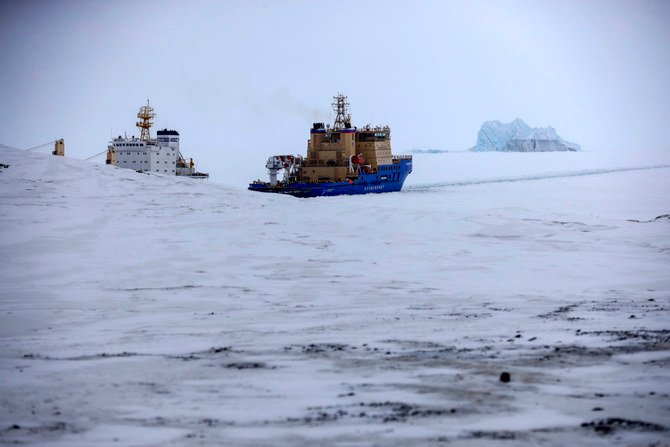
Once a desolate home mostly to polar bears, Russia's northernmost military outpost in Alexandra Land island near Nagurskoye, Russia, is bristling with missiles and radar. PHOTO: AP
While the Arctic region remains peaceful, Russia’s recent steps to militarize the region, coupled with its bellicose behavior toward its other neighbors, make the Arctic a security concern
The foreign ministers of the eight Arctic countries, Canada, Denmark, Finland, Iceland, Norway, Russia, Sweden, and the US, gathered in Iceland last week for the Arctic Council ministerial meeting.
The council, which is celebrating its 25th anniversary this year, is the international community’s premier forum to address Arctic-related issues. It is strictly intergovernmental and operates on the cooperation and goodwill of the eight permanent member states.
This gathering was particularly important because Iceland, which just held the rotating chairmanship of the council, is handing the reins over to Russia. For the most part, the Arctic Council remains one of the fewinternational organizations in which Russia and the West still find scope for cooperation. This is mainly because of the the council’s remit. For example, its founding charter from 1996, the Ottawa Declaration, explicitly states that it will not focus on contentious military or security issues.
Instead, the Arctic Council has focused on economic development, indigenous populations living above the Arctic Circle, coordinated responses to ecological disasters in the region, and climate change. Since these are all issues on which most can easily agree, council has been able to escape a lot of the division in other international organizations over Russia’s invasion of Ukraine or its continued support of Syrian President Bashar Assad.
However, while the gathering in Iceland was about the Arctic, all eyes were also on the meeting between US Secretary of State Anthony Blinken and Russian Foreign Minister Sergey Lavrov.
Not only was this their first meeting, but it was also the most senior level engagement between the US and Russia since President Joe Biden took office in January. The meeting barely touched on the Arctic. Instead, the two discussed that have strained US-Russian relations, such as Ukraine, Syria, the recent cyberattack against a US pipeline, and election interference.
But even with the spotlight on the US-Russia meeting, the international community should not ignore Russia’s chairmanship of the Arctic Council. Moscow’s interests in the Arctic are only natural considering that half the territory above the Arctic Circle belongs to Russia, which also has a long history of engagement there.
For example, in the early 18th century, Russia sent many expeditions to explore and map the Siberian coastline, at a crippling cost to the state coffers. The explorers, scientists, and adventurers who partook in the Kamchatka expeditions, known as the Great Northern Expeditions, numbered in the thousands. Even by today’s standards, it is still probably the largest scientific expedition in history.
Almost 300 years later, Russia is still staking new claims in the Arctic. In 2007, Artur Chilingarov, then a member of the Duma, led a submarine expedition to the North Pole, planted a Russian flag on the seabed, and declared: “The Arctic is Russian.”
In recent years, Russia has increased its presence in the Arctic — both militarily and economically. There is no doubt that Moscow will use its tenure as Arctic Council chairman to advance its national interests in the region. Russia is motivated to play an active role in the Arctic region for three reasons.
First, the Arctic is a low-risk way to promote Russian nationalism. Because nationalism is on the rise in Russia, President Vladimir Putin’s Arctic strategy is popular. Stunts such as planting the Russian flag on the seabed have no foundation in international law, but are loved by the Russian people. For Putin, the Arctic is an area where Russia can flex its muscles without any significant geopolitical risk.
Second, there is economic potential in the region and Putin knows it. The Arctic has large stockpiles of unexploited oil and gas reserves, most of them in Russia. Moscow hopes that the Northern Sea Route, which connects European markets with Asia along the coast of Russia, will become one of the world’s most important shipping lanes.
Finally, Russia takes the security situation in the region seriously. Moscow has invested heavily in militarizing its Arctic region. It has re-opened several old Soviet-era Arctic bases and built many more from scratch. Russia has developed new military hardware, specifically designed for warfare in Arctic conditions. Two-thirds of the Russian Navy is allocated to the Northern Fleet based above the Arctic Circle. While the Arctic region remains peaceful, Russia’s recent steps to militarize the region, coupled with its bellicose behavior toward its other neighbors, make the Arctic a security concern.
More and more actors are getting involved in the region, including China, which declares itself “a near Arctic state” even though its closest point to the Arctic Circle is 1,300 kilometers away. It is worth pointing out that this is a term made up by Beijing, and it does not exist in the lexicon of international affairs. As melting ice opens new shipping lanes and allows for greater exploration of natural resources in the region, the work of the Arctic Council will become increasingly important.
It remains to be seen what the coming years will hold for the council under Russian leadership. It is likely that Russia will pursue policies that preserve the existing cooperation inside the council with the West and not purposely antagonize the other seven members. Conversely, there is little appetite in Washington and among its Western partners to find areas of cooperation with Russia other than on climate change. Nevertheless, it is in everyone’s interest that the Arctic remain a region of peace and stability.
Luke Coffey is the director of the Douglas and Sarah Allison Center for Foreign Policy at the Heritage Foundation






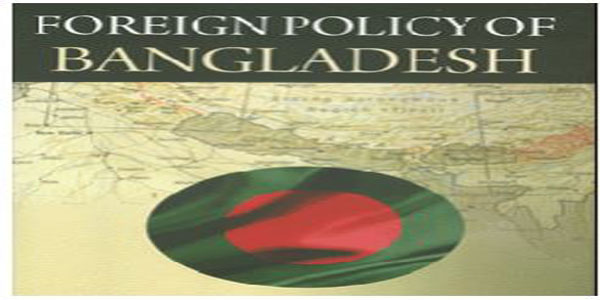
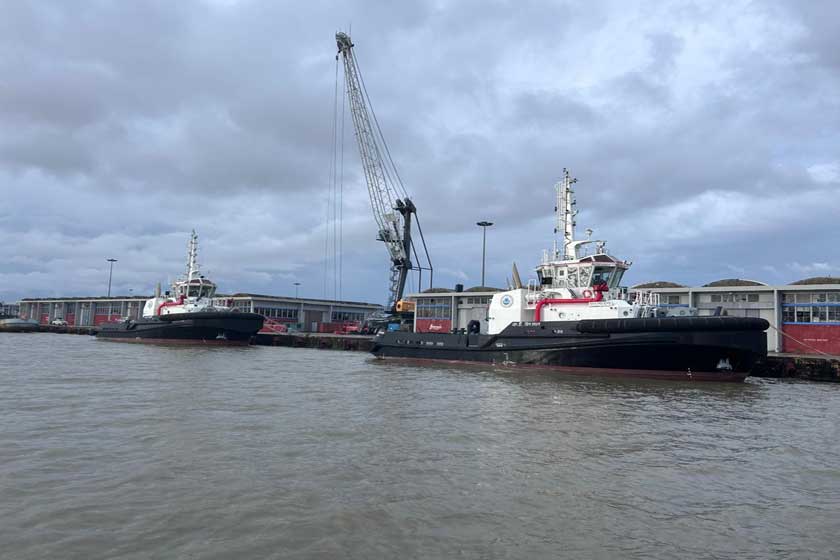
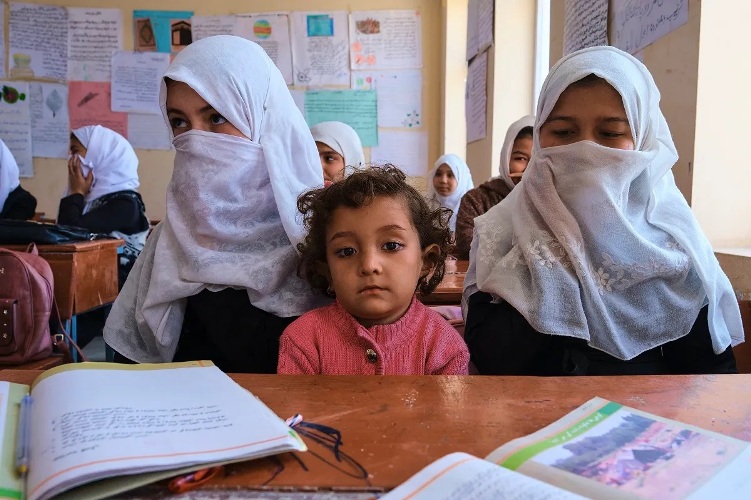
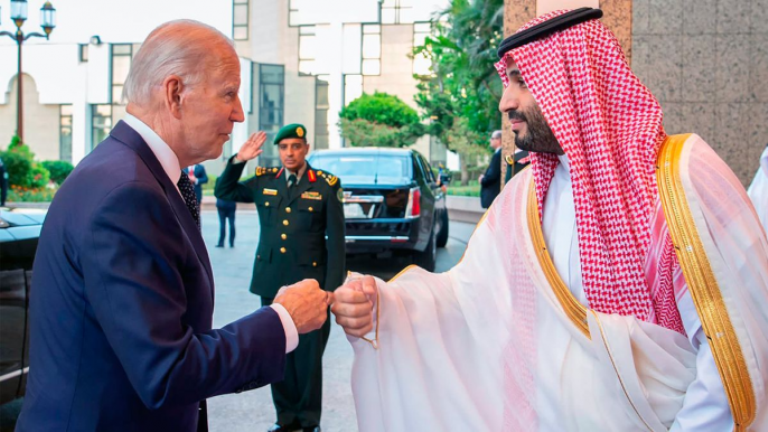

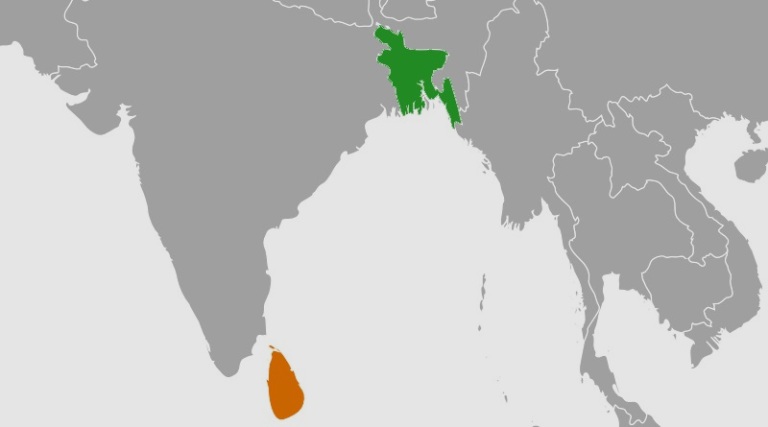
0 Comments